Solar Photovoltaic (PV) or Roof top solar
Well we made the plunge and have roof top solar. We
installed a 7.1 KW system in 2013, which here in NE Tennessee produces about 28 KWh/day or 10,000
kWh in it's first year of operation. This covered 98% of our
electricity for both the house and about 800 miles/month of driving in our
plug-in cars. After we purchased our second plug-in, a Volt we added
5 more panels bringing our capacity up to 8.2 KW. So we should make more
than 11,000 KW this next year which we believe will cover all of our usage.
Then in 2019, we added another 6 panels as we now have a Tesla Model 3.
Solar is now powering about 1400 miles a month.
Our system is 9.5 kW, but I still have the original 7 kW of inverters. I
realized that clipping is actually quite rare. Rarely more than a few hours
during the spring and fall. What I gain the rest of the year through over
sizing the inverters has been more
than worth it.
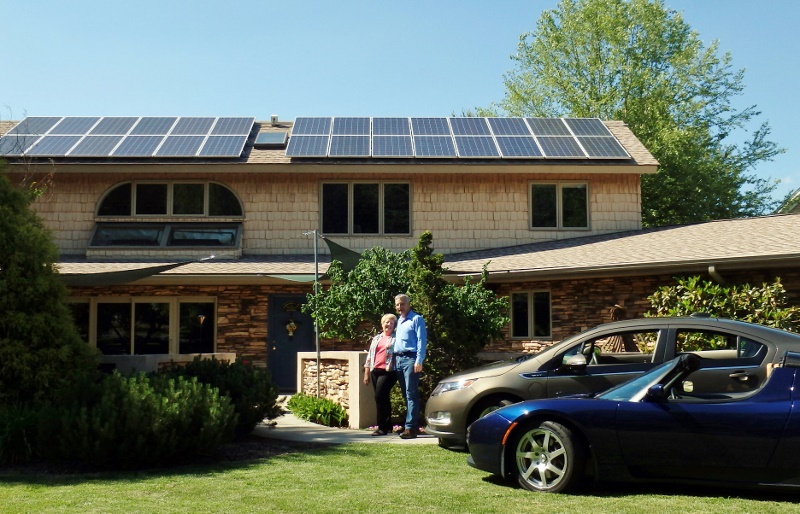 |
We initially installed 28 Sunvia 255 watt panels for a total of
7.1 kW. In NE Tennessee we average about 4 hours of sun/day so
we produced about 28 kWh/day. Sunvia, the panel manufacturer is a Georgia company.
And the SunnyBoy inverters were made in America.
Pictured in the front lawn are our EV's as of 2019. One of our 255
watt solar panels gives about 4
miles of EV driving per day so I estimate we use about 28 panels to power the
house and 11 to power our electric cars. |
.jpg) |
In August of 2015 we added 5 additional panels on the garage
to cover the additional usage from the Volt. With a 40 degree
west orientation we produce peak power longer into the day.
Our 3000 watt inverter had an open channel so these 5 additions required no
backend changes. While in theory the 3000w inverter and 12
panels were matched the inverter rarely put out over 2500 watts.
And with this string 45 degrees west of the other panels, as the main
string drop, the other 5 ramp up. |
.jpg) |
We use SunnyBoy SMA inverters. A 3000w now with 16 panels connected
and the other is 4000w with a string of 12 panels and second string of 11
added in expansions. A nice feature of these inverters is, if the grid is
down we can enable two 1500 outlets, one per inverter, to power the
refrigerator and charge a car as long as we have some sun. With most
inverters if the grid is down your solar is down as well.
The display shows current power, daily power and total power and the graph that can shows the last 24 hours or
days of
production.
We use the grid as a large battery as our meter effectively goes
backwards during the day. This is a win-win as we produce
excess power when the grid needs it and pull power later
when the electric company has spare power. |
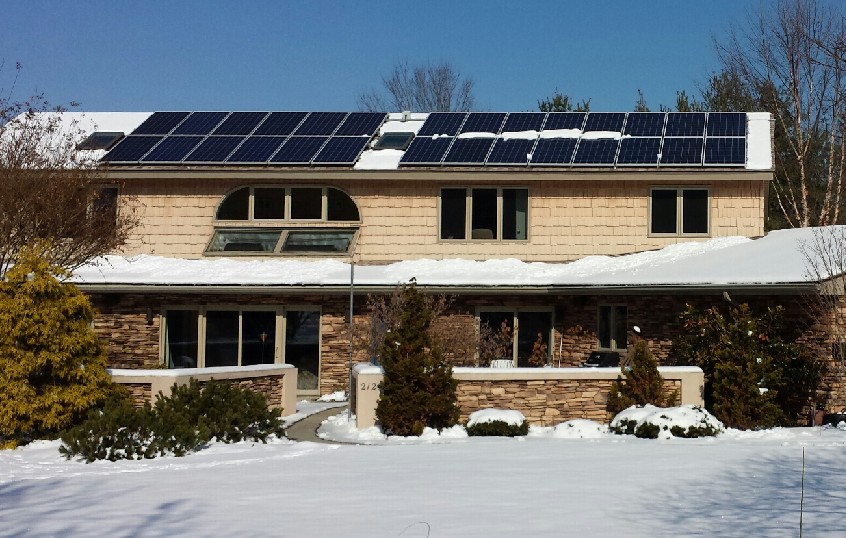 |
Many have asked about snow and yes snow will stop your solar
production. But because the panels are dark, tilted and slick,
snow melts fast from the panels and you are producing again with just a few
hours of sun. |
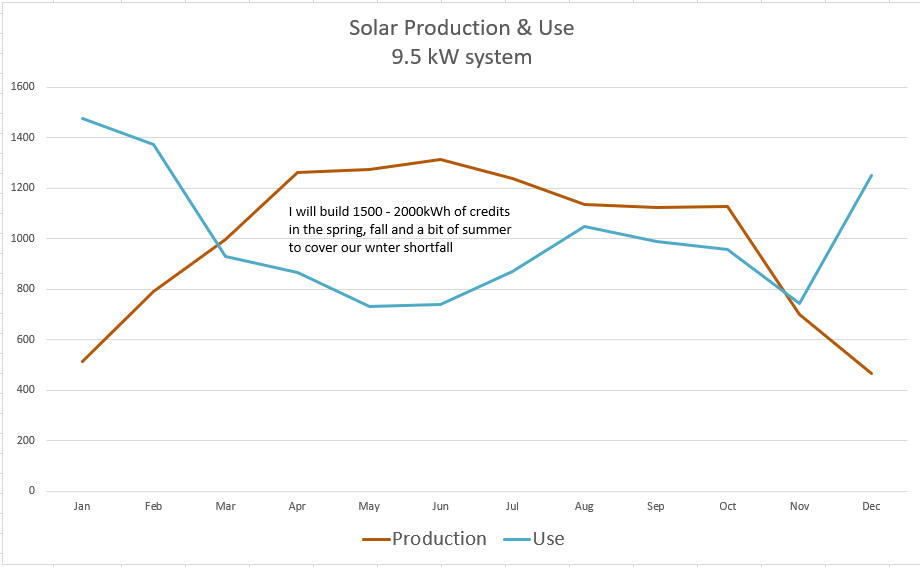 |
Our electric use is now about 1000 KWh/month And our
production about 1050 the past two years. So we producing all of
our power and making a small donation to the power company as they will not
pay for any excess power we generator.
In our second year most lights were replaced efficient LEDs. In the
third year we purchased a Chevy Volt as a second plug-in car. We
then fell behind and we added more panels.
We now drive a Tesla Model 3 and Toyota RAV4 Prime and average about 1400
solar miles a month.
You can see for several months in the spring, summer and fall we produced more
power than we used, reaching a peak of 650KWh in May. We are now
building a credit of 1800-2200 kWh to get us through the darker winter days. |
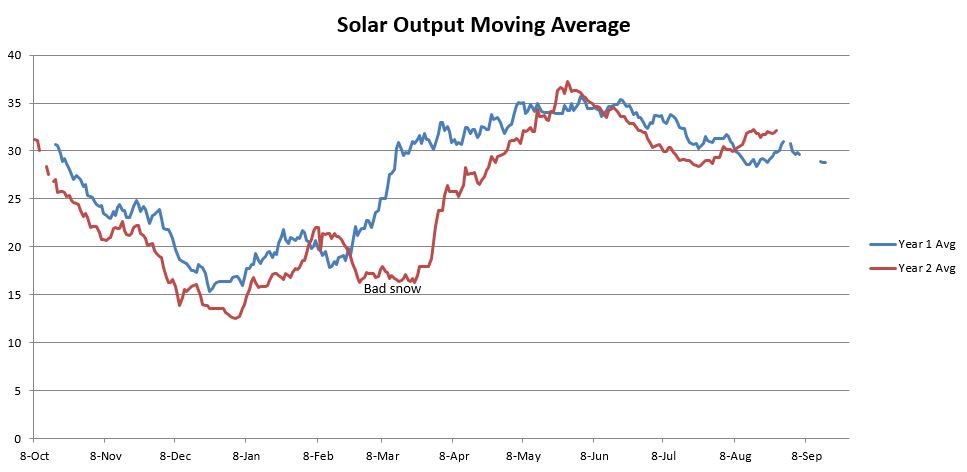 |
As you can see power varies significantly over the year.
During the relatively sunny spring we average about 35 KWh/day.
But with the shorter cloudier days of winter production dropped to a low of
15 KWh/day. This graph was during our first two years so now both
spring and winter production are more, but you get the idea of how solar
varies by day and month. Thank goodness for the net metering as the surplus we made
this spring, summer and fall should carry us through winter.
You can also see a slight drop off in year 2, but it is hard to determine how
much is due to changing conditions. For example the week of snow
in late Feb.
|
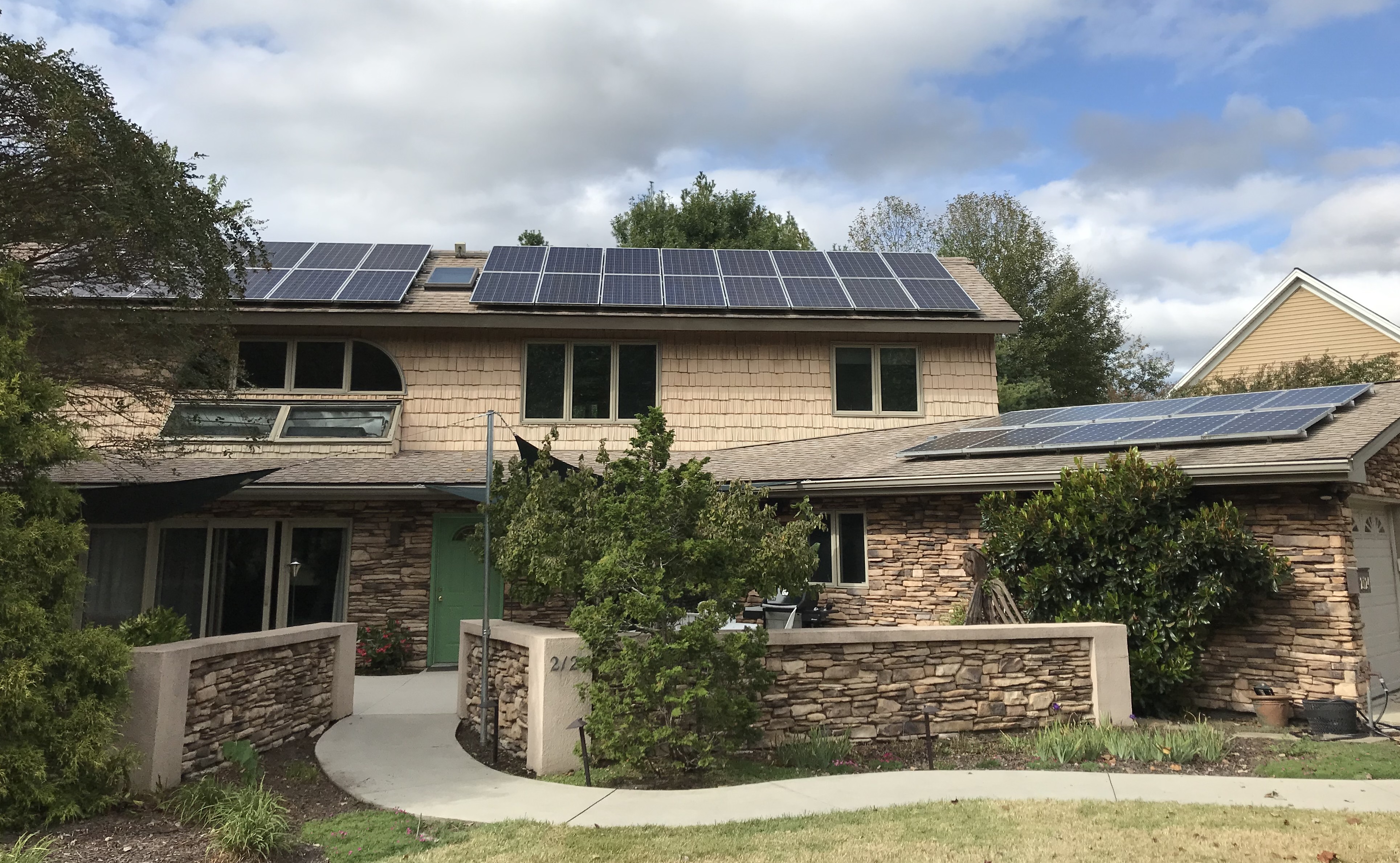 |
We made a second and likely final expansion of our solar
with 5 more panels. This brings us to 9.5kW on the roof of DC
power but the inverters remain at 7 kW. |
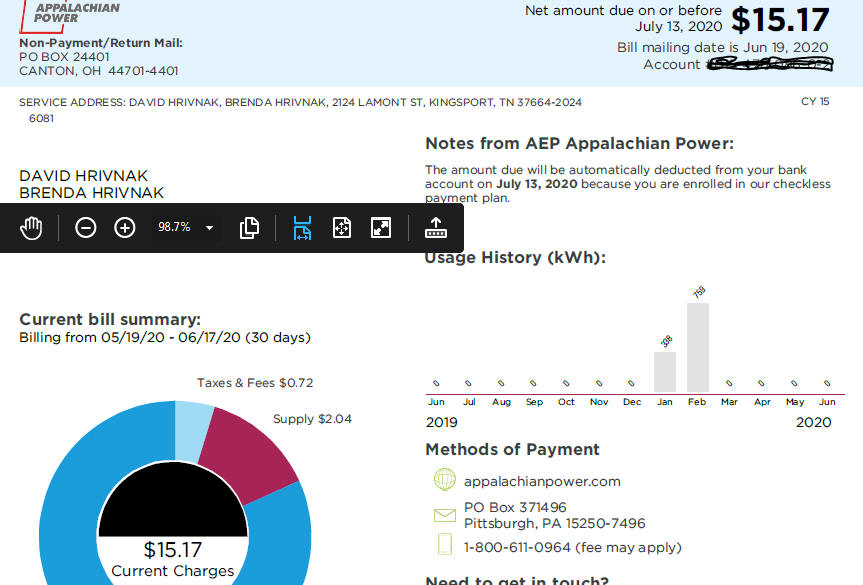 |
We still have an electric bill as we pay the
connection fee. This is fair as it gives us access to a large "battery".
Assuming the system works as planned, and so far it has, we should be
generating power for the next 25 years. We are told that the power
will gradually drop off losing up to 20% over it's 32 year life.
With net metering we first use any power that we generate. So
say we are using 2000 watts and the system is generating 6000.
Then I am sending the utility
4000w. The utility never sees the 2000w we used.
In the evening when we use 4000w, but only generate 1000, then
we pull 3000w from the grid.
I use about 30% of the power I generate directly. The other 70%
goes back to the grid to be used later. If you do not have net
metering then batteries become a necessity. In this bill snapshot we
used our 2019 credits in November and December and even halfway into
January. February, with no net metering credits remaining, solar
simply offset our usage. Then in March we started to produce more
than we used each month. In 2020 and 2021 our annual usage was 0. |
|
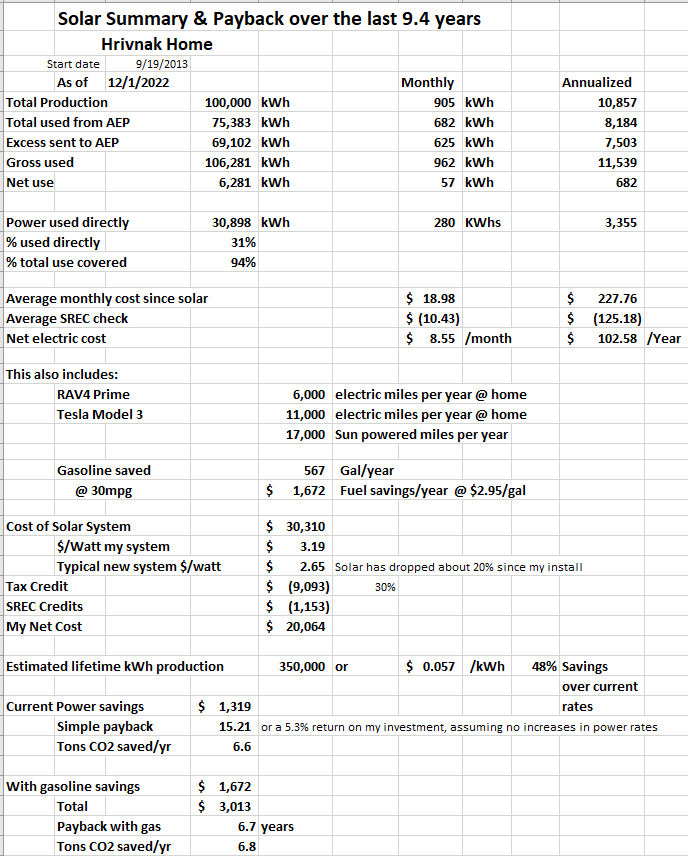
|
Here is a summary of the costs for our system after over 9
years. Costs are a little funky as we added to the system twice
over the past 9 years. Our system is now generates about 12,000
kWh/year. My effective cost is about $.06/kWh which is a 48% discount
off current power rates which jumped an incredible 32% this year.
Rates are likely to continue to rise over the next 20+ years the system
should be in operation.
Note: Usage has also varied over the last 9 years as we have:
 | Moved to all LED Lighting. |
 | Upgraded to an Amana Inverter driven HP |
 | Moved
to a Heat Pump water heater. |
 | EV miles the first year was about 4000 as the
Roadster was not a good trip or errand car. EV miles have since grown to 16,000 miles
a year from home charging. Our EVs are now about
40% of our loads. |
I see solar as a reasonable "investment"
as it pays better than CD's or bonds and is much safer than stocks or real
estate. |
 For additional information:
Energy Efficiency at Home –
http://www.letsgosolar.com/solar-panels/rankings/efficiency/
Ultimate Guide to Solar Panels –
http://www.letsgosolar.com/solar-panels/
Residential Solar Panels –
http://www.letsgosolar.com/solar-panels/home-and-residential/
|
One of our goals was to get to net 0 energy usage.
With the expansions we are close and actually the last two years we have
donated power to the grid.
Some have asked what I would do different and fortunately not much.
We are adding batteries not for any financial reason, but to be prepared
if there was a grid outage as as I sell and engineer solar part time, I
learn best by first hand experience. Two best practices we use are: One is I would overdrive the inverters
at least 25%. So have 5000w of panels on a 4000w inverter as
most of the time the inverter runs far less than maximum capacity.
A west bias on a string appears good to level production during the
day. We were very fortunate our house orientation supported this. |
